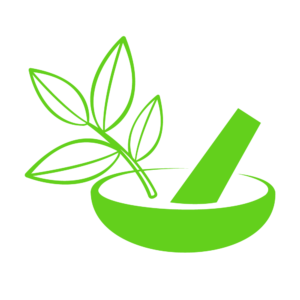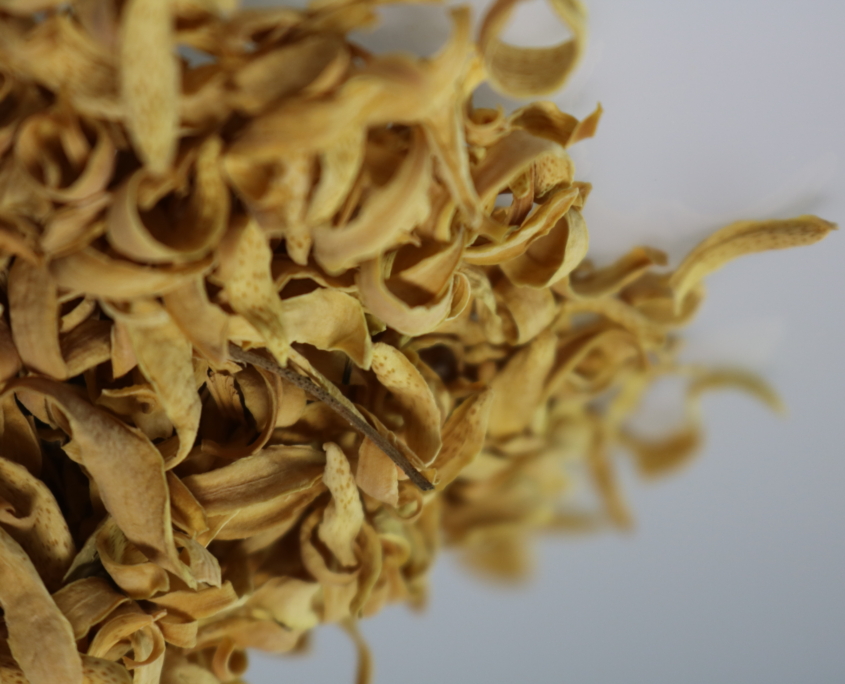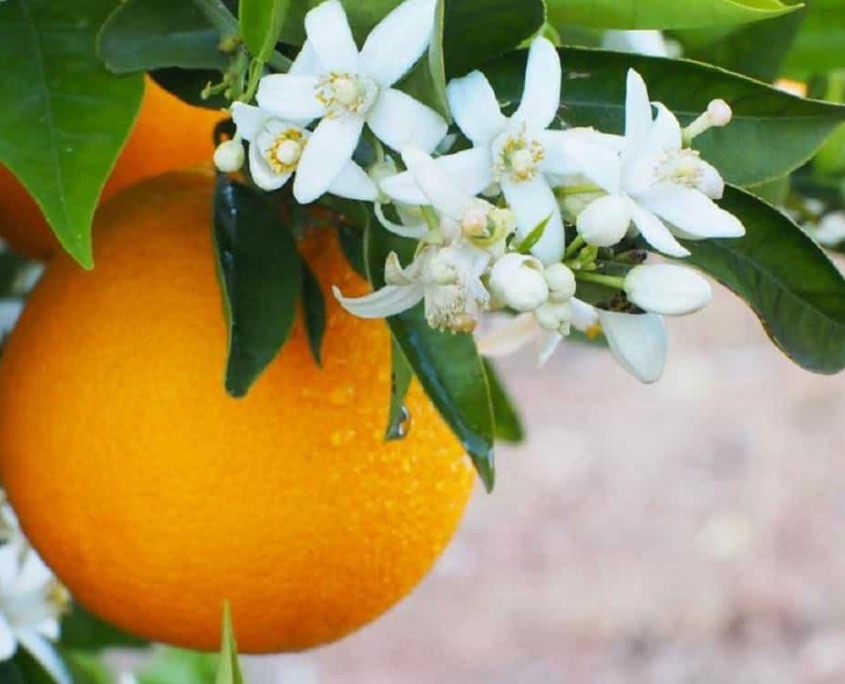Bitter Orange
English name: Bitter Orange
Persian name: بهار نارنج
Scientific name: Citrus aurantium
Common name: Orange
Arabic name: نقاش نارنج (Naffash)
French name: Citronnier
German name: Bitterorangen baun
Synonymous names: Citrus amara, Citrus vulgaris, Citrus bigaradia
Family Rutaceae Citrus family
Description
orange is a tree up to 5 meters high; With branches that have scattered thorns, its oval and pointed leaves are up to 10 cm long, and its petioles also have two-sided wings at the top. Orange flowers are single or multiple along the axis of the branches. have taken. These flowers are white, fragrant, crisp and fragile and have 5 petals. The fruit is a type of seta up to 10 cm in diameter with a thick, orange skin. The skin of the fruit tastes bitter, but the juice inside is sour. The parts used are orange flower, fruit peel and orange juice, all of which have medicinal properties. Naranj flowers are known as Bahar Naranj in Iran, which is the most important part used. Orange grows in parts of Iran, including Gilan, Mazandaran and Fars provinces.
Historical history of Bitter Orange consumption:
Bitter Orange, which is a valuable medicinal plant, was first cultivated in China and then in the Middle Ages it was noticed by Western doctors, as it is said that in the 16th century, an Italian princess named “Anna Marri DeNerola” noticed it for the first time. The essential oil was obtained from the flowers of the plant and he used it to scent his gloves. Nowadays, this essential oil, which is called neroli, is one of the expensive essential oils. The types of this medicinal plant are still very popular among Chinese people.
- Principle
- Energy
- Carbohydrates
- Protein
- Fat
- Sugars
- Fiber
- Value/100g
- 37
- 9.7
- 0.6
- 0
- 0
- 0
- Unit
- Cal
- g
- g
- g
- g
- g
The most important reported effect of orange peel:
Anti-gastritis, anti-allergic, anti-spasm, digestive, stomach stimulant and appetite stimulant.
Important ingredients
The most important composition of tree flowers is essential oil, which is 0.2 to 0.5%. The most important essential oil compounds include linalyl acetate, linalool, nerol and geraniol. Other compounds include flavonoids and bitter substances. The essential oil is known as Bitter orange Essential Oil or Neroli Oil.
Important effects
In folk medicine, it is used as a pain reliever for nervous problems and to relieve insomnia. Also, the essence of flowers is widely used in the preparation of perfumes and colognes.
Method and amount of consumption
Preparation of tea: Pour a glass of boiling water on 2 grams of dried flowers and strain after 5 to 10 minutes. One or two glasses of this product is consumed at bedtime. Also, dried and crushed or powdered flowers are available in the market in the form of tea bags, which are suitable for making tea. You can put a tea bag in a glass with a glass of boiling water and throw away the tea bag after 5 minutes and drink the prepared tea at bedtime. Apart from T-bag, many flower products have been prepared and marketed independently or together with other plants. This dosage can be repeated several times a day.
The most important reported effects of orange juice:
Anti-cancer, anti-allergic, anti-inflammatory, anti-oxidant, disinfectant, anti-spasm, anti-flatulence, anti-cough, anti-virus, anti-viral, anti-ulcer, heart protector, digestive, digestive, stomach stimulant, protector, cholesterol and blood sugar reducer, blood fat reducer, hypertension reducer. , reducing uric acid, stimulating the immune system, laxative, stomach tonic and soothing
The most important reported effect of orange peel:
Anti-gastritis, anti-allergic, anti-spasm, digestive, stomach stimulant and appetite stimulant
Important things
1- Unbloomed flowers are collected early in the morning and dried in the dark.
2- The daily consumption of orange peel for its medicinal effects is 10-15 grams per day. The dosage of orange peel tincture is 20 drops up to three times, a total of 60 drops per day.
3- In Chinese medicine, both unripe and ripe orange fruits are used to help digestion, relieve constipation and expectorant. They also believe that it has a calming and tonic effect on the nerves. Apart from that, they use it to cure insomnia and when causing shock.
4- The essential oil of Bitter orange flowers, which is known as neroli oil in the world, has an anti-depressant and sedative effect. It is also used to soften dry skin and prevent brittle capillaries. For this purpose, one or two drops can be mixed with creams and used to soften the skin.
5- If it has a suitable concentration and is away from microbial and fungal contamination, it is useful for relieving insomnia, relieving shocks and eliminating bloating.
6- Due to the fact that the weather conditions and the place of growth can have an important effect on the effective substances of all parts of the plant, it is certain that the composition of the essential oils of orange flowers in different areas or collected at different times are different and as a result, in the therapeutic effects. They are impressive. For example, the therapeutic effects of Bitter orange in the north and south of the country may be different, which should be thoroughly researched.



